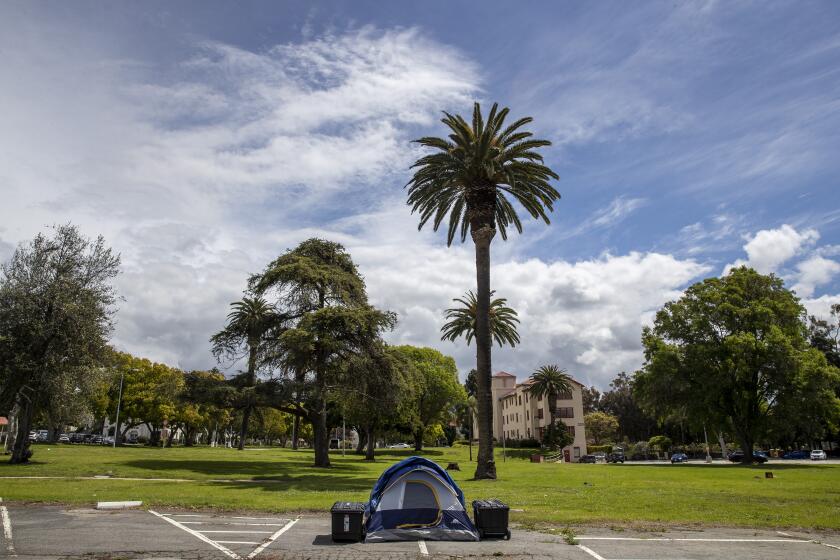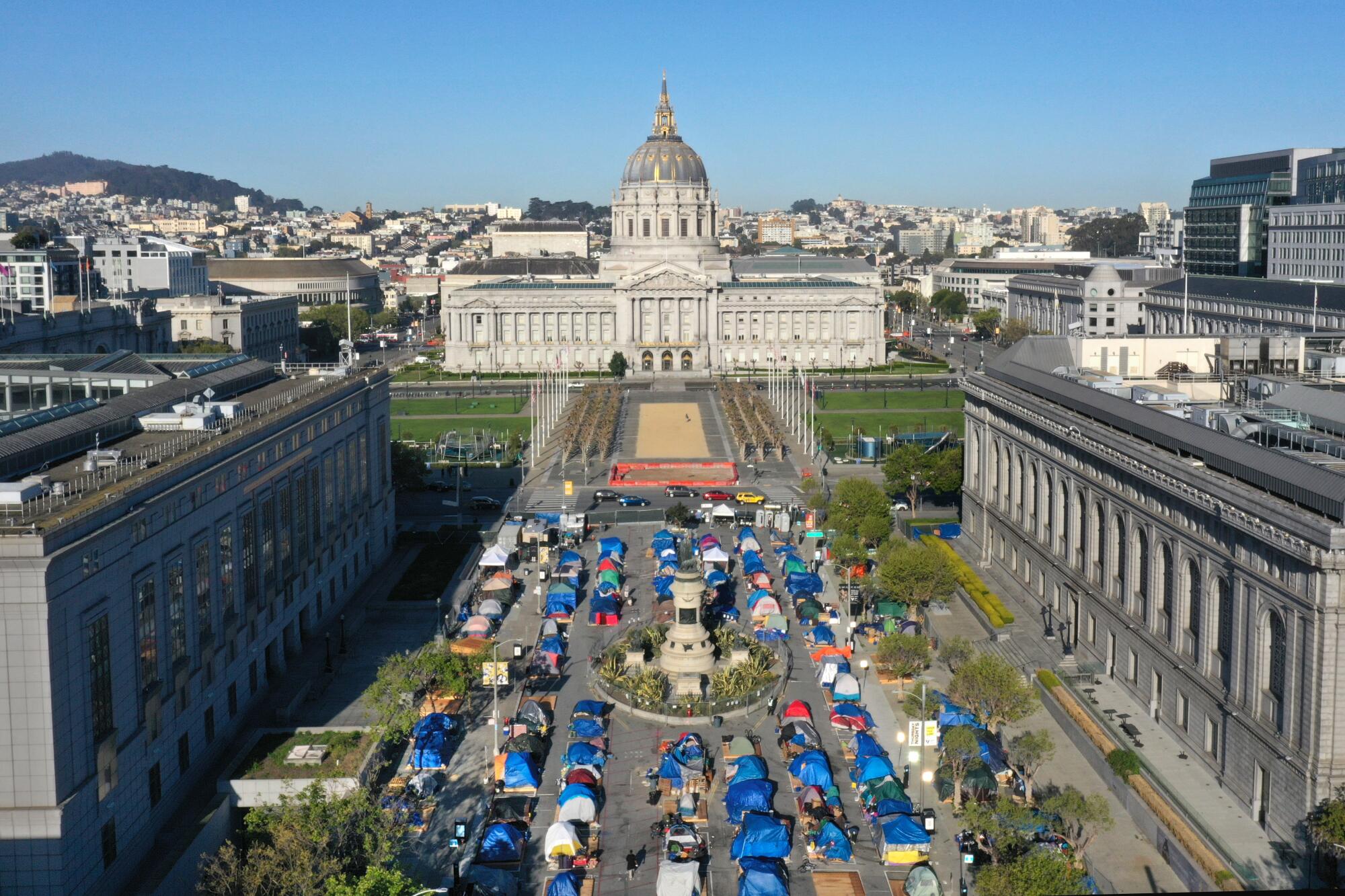
- Share via
SAN FRANCISCO — On an unseasonably warm day in March, Michael Johnson lay in his tent, sweat dripping down his face, on Minna alley just off 6th Street in San Francisco’s Soma neighborhood.
As they often do, a team of city outreach workers, sanitation workers, cops and a firefighter swarmed the alley, which was lined with tents. They were there to offer unhoused San Franciscans a choice.
They could accept an offer of some form of shelter, or they could take down their tents and move along. What people like Johnson, who has been homeless two years, couldn’t do was stay on this street, where the sidewalk was blocked by dozens of garbage bags. A power washing of the block and a collection of trash would take place after the people departed.
“The point is I want you out of the street, big homie,” one outreach worker told Johnson.
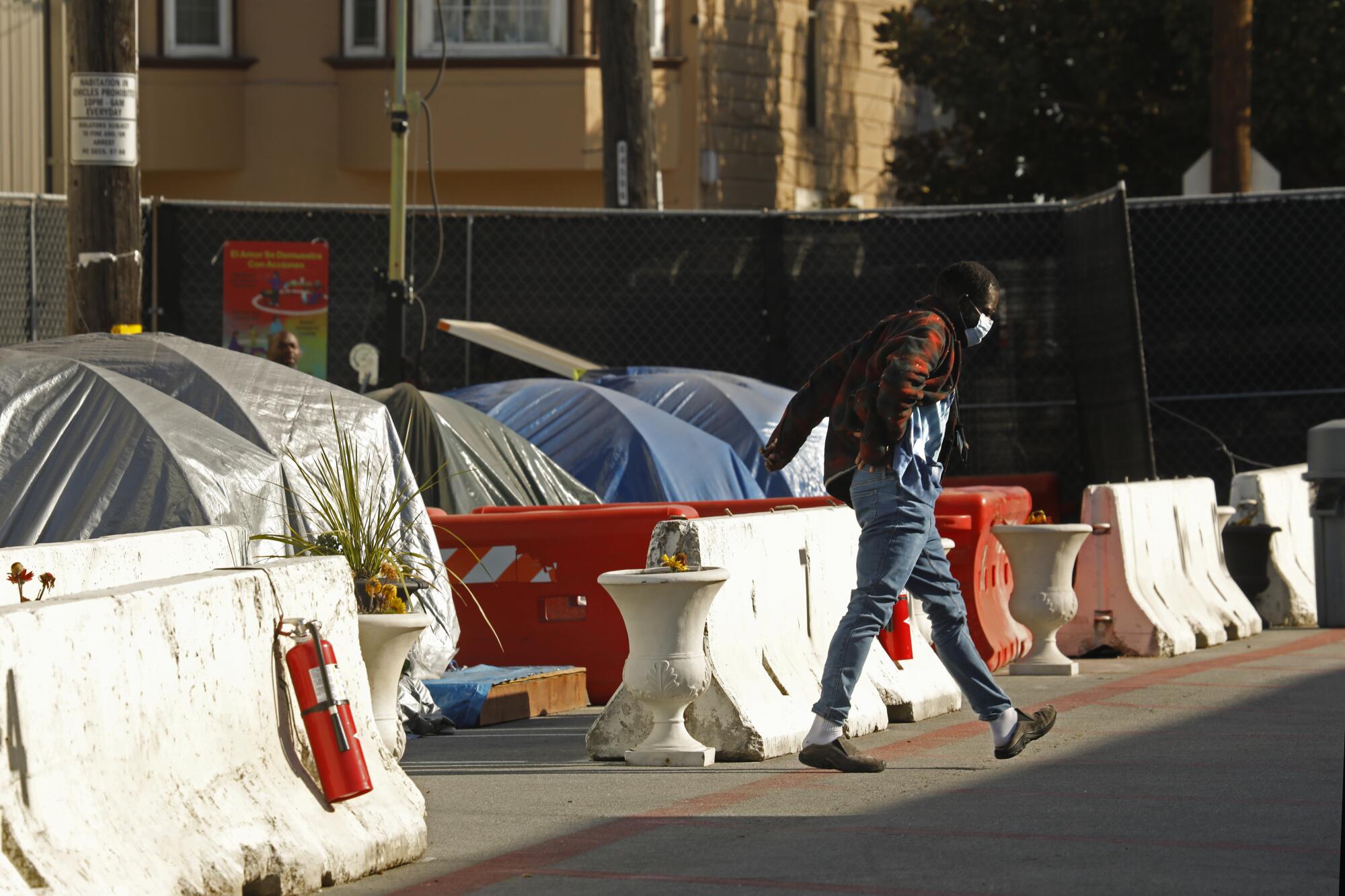
The 38-year-old understood. He pulled down his tent, grabbed his bike and backpack and prepared to move along — but not before grabbing an ice cream from a nearby store.
Instead of going to a large congregate shelter or a hotel, Johnson boarded a bus with a plastic sheet partition protecting the driver from the virus. He was brought to one of San Francisco’s six sanctioned tent encampments, which sprouted up at the beginning of the COVID-19 pandemic and have become a key part of the city’s homelessness response and a lightning rod for debate among activists, politicians and homeless people.
“You can come and go as you please. There are not as many rules.”
— Michael Johnson, referring to the city’s tent sites
Cities up and down the West Coast, including Seattle, Sacramento and San Francisco, confronted by the high cost and slow progress of building housing for homeless people, have turned to these permitted tent encampments. They offer services such as toilets, meals and help finding a permanent place to stay. These efforts, once anathema among some homeless service providers, are becoming more widely accepted as unsheltered homelessness has grown and government officials reckon with a pandemic that has made placing people in large shelters dangerous.
The Times spoke with more than two dozen people who either have stayed or currently stay in these sites. Many wished for a room in a hotel or an apartment to call their own. Still, a majority said that they appreciate these lots, some of which will eventually have supportive housing built on them.
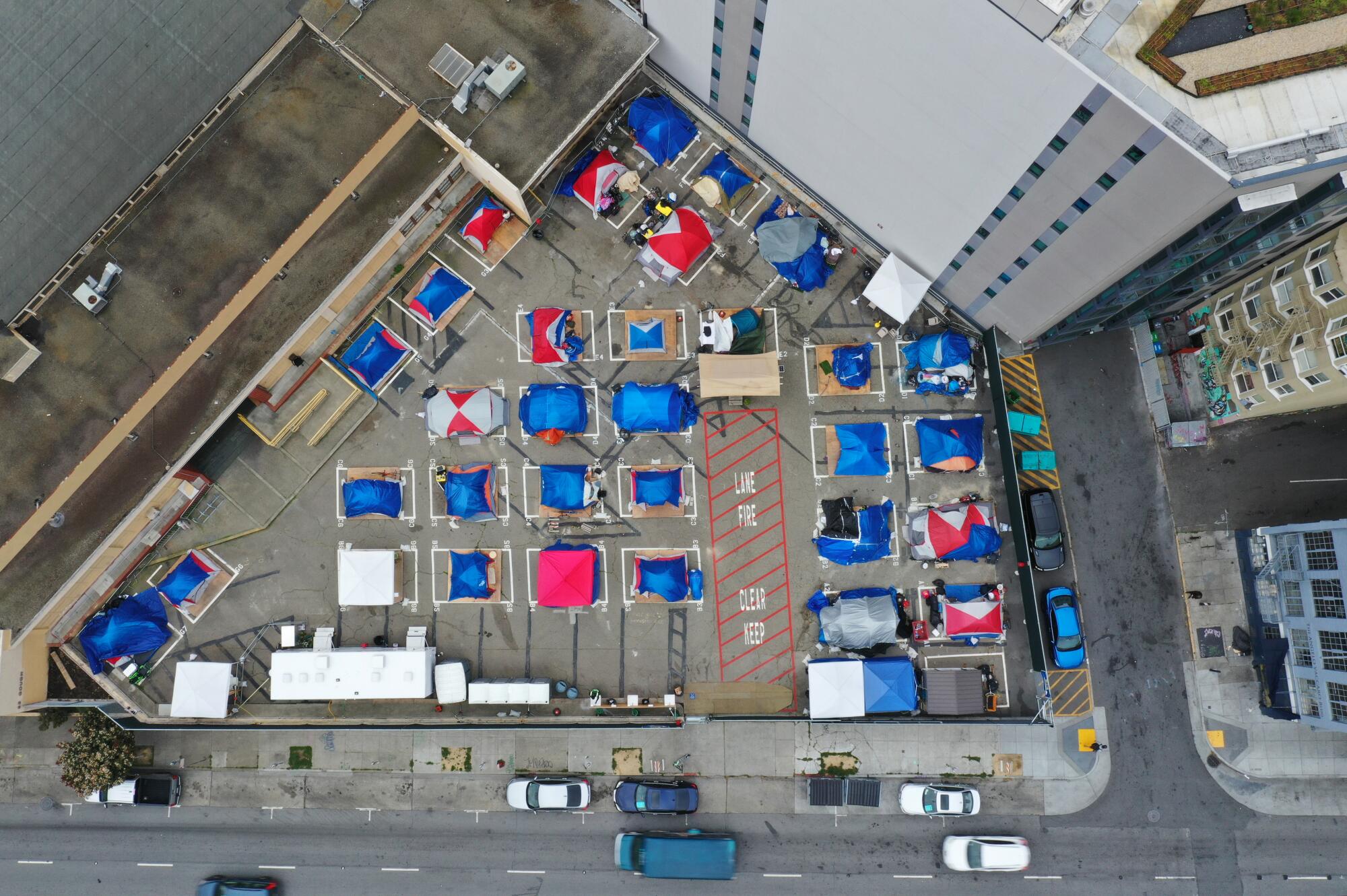
Johnson was one. He’s been trying to overcome an addiction to methamphetamine and wants to find a permanent place to live — something he hasn’t had since he broke up with his girlfriend two years ago. A hotel room would be a start, but he won’t go to one of the city’s large shelters, which have been the site of large outbreaks of COVID-19 and have strict rules and curfews.
“You can come and go as you please,” he said of the sanctioned tent encampments, which are called “safe sleep sites” by the city. “There are not as many rules.”
Sanctioned campgrounds to shelter homeless people are fine as a temporary measure only.
The city’s first site in the shadow of City Hall and next to the public library sprouted up just as the shelter system’s capacity was limited by the coronavirus and large encampments with 10 or 20 tents began to appear on San Francisco’s streets. It started as an ad hoc response to the pandemic but will probably remain in some form.
City officials say there’s more demand for the roughly 260 spots at these sanctioned tent encampments around the city than spaces available. On one day in early April, there were five open sanctioned camping spots, four spaces open at one of the city’s congregate shelters and two hotel rooms. All were filled by outreach workers by the early afternoon.
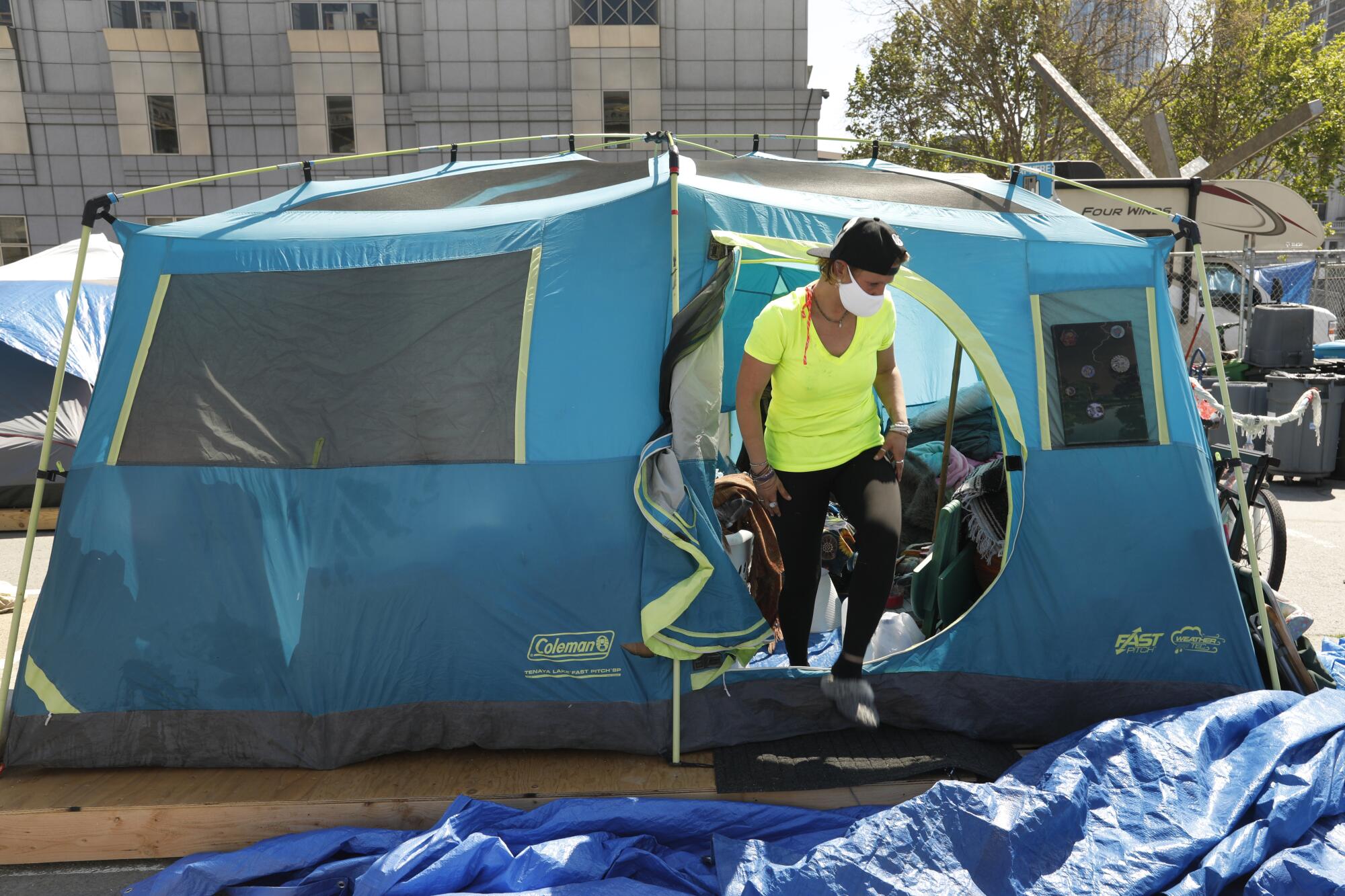
City officials, including San Francisco Mayor London Breed, have partially credited this effort for a decline in the number of tents on the city’s streets. In April 2020, there were 1,100 tents on San Francisco streets and 66 encampments of six tents or more. Now, there are just under 400 tents and 10 large encampments, according to Jeff Kositsky, who previously ran the city’s Department of Homelessness and Supportive Housing and now is in charge of its unsheltered homeless response.
The San Francisco Board of Supervisors recently debated and eventually shot down a proposal to require the city to provide shelter for all unhoused people. Its lead supporter has said that this could be accomplished mainly through the expansion of the safe sleep sites. The city’s latest point-in-time count found about 8,000 homeless people, but officials say based on other estimates the number is closer to 20,000.
“This creates choices for people. They have agency in getting to decide how to live their life,” Kositsky said.
He added that the city was attempting to strike a balance between creating safe, passable sidewalks, which housed residents want, and also helping find places for homeless people to stay in a humane and dignified way. Kositsky described the tension between these two needs as he stood in the city’s largest sanctioned encampment on Fulton Street, near City Hall. About 140 people sleep there each night.
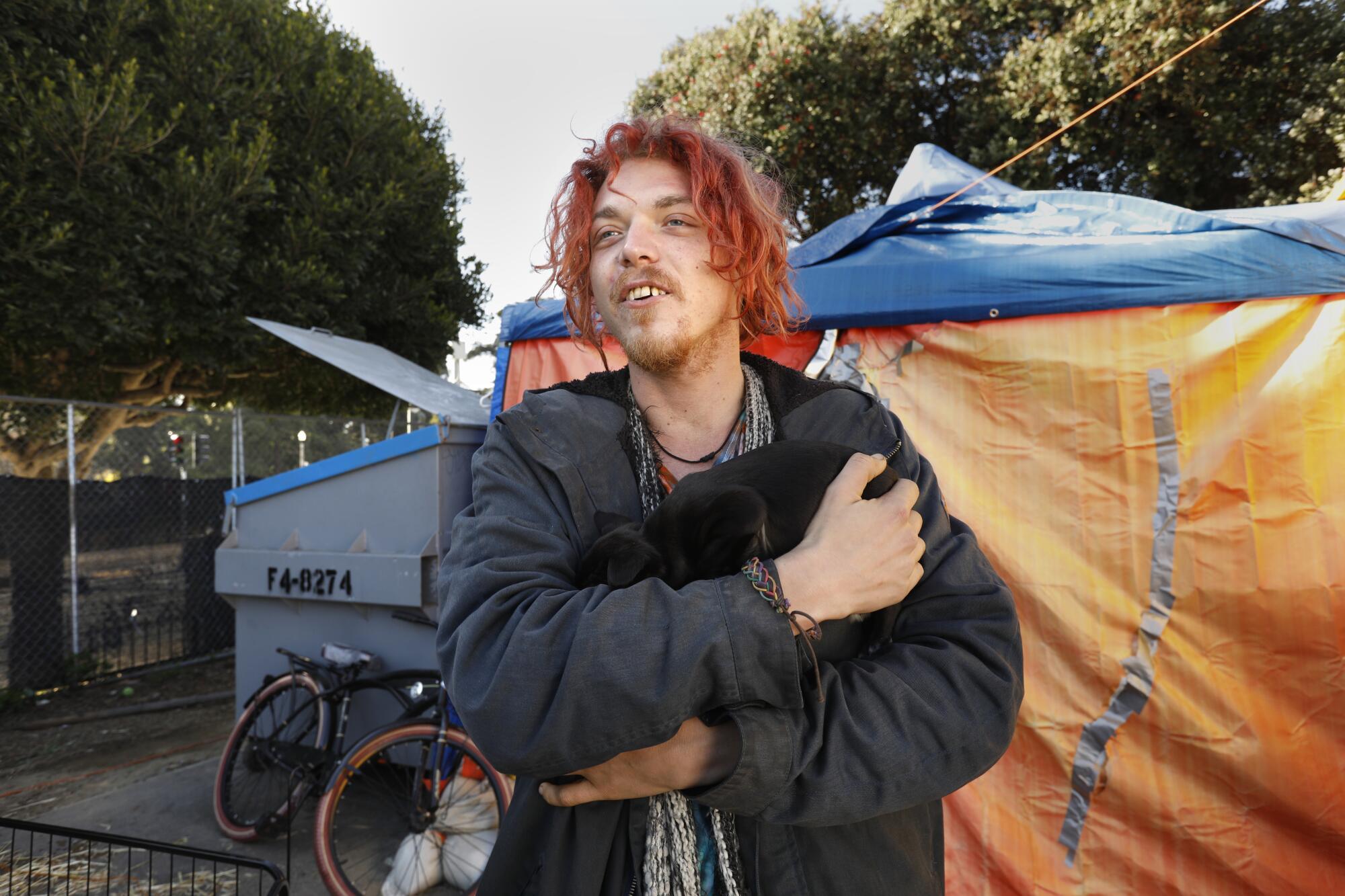
The dynamic on the streets “has to do with the failures of our brand of capitalism, institutional racism, a broken behavioral health system, and none of us who do this work, we’re not going to fix that,” Kositsky said. “What we’re trying to do is manage a really deep systemic issue where homelessness is a very visual depiction of our failures as a society.”
In Los Angeles, simmering public anger about large unsanctioned encampments has also led politicians to seek out immediate solutions. One sanctioned encampment on the West L.A. campus of the Veterans Administration opened last summer.
“Sometimes people aren’t ready to go into housing. People like this because they get to be in their own space.”
— Lena Miller, Urban Alchemy CEO
In the aftermath of the controversial closure of Echo Park Lake and removal of homeless people, another site opened recently on a parking lot in East Hollywood.
It will hold about 120 people — and cost about $2,600 per person, per month, according to city documents. It is being managed by the same organization, Urban Alchemy, that’s running several of the sites in San Francisco. There’s an expectation that this won’t be the only one, and homeless services officials in Los Angeles have been talking to their counterparts in the Bay Area about how to best manage the sites.
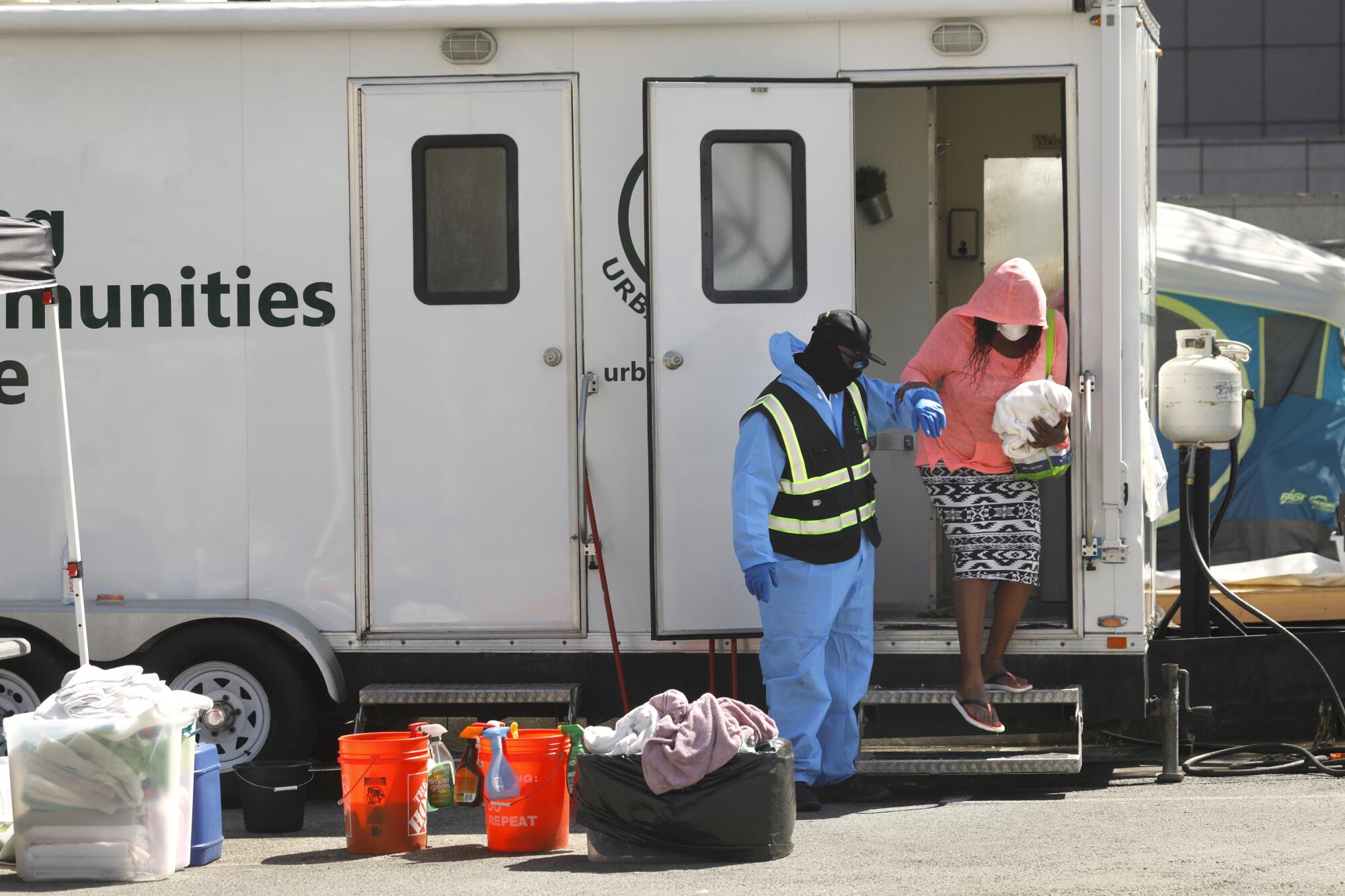
Lena Miller, chief executive of Urban Alchemy, said these locations help people begin to overcome the traumas they faced on the streets. The sites help them stabilize, she said, and begin to consider how they can move forward in life.
“Sometimes people aren’t ready to go into housing,” Miller said. “People like this, because they get to be in their own space. They get to be in community. They’re embraced and then they can start to heal, and they’re safe — not only physically but emotionally, and spiritually.”
San Francisco’s Fulton Street encampment began spontaneously at the outset of the pandemic and grew to about 90 tents packed closely together. Then, activists say, one evening city workers erected a fence around it and enrolled people who chose to stay. Now, 10-by-10-foot squares delineate where people can place their tents and keep their possessions.
Showers and toilets sit in one corner of the lot, and a canopy offers people a shaded space to charge their phones. There are three meals a day, and people from a needle exchange frequently visit.
The fenced-in lot is not without its problems. Phones are stolen regularly and fights between the staff and homeless people break out sometimes, encampment residents say. One resident said he carried a machete to keep himself safe. Still, multiple people said they found it preferable to living on the street and having to constantly strike their tent when public works crews arrive to power-wash sidewalks and pick up detritus. Others preferred it to living indoors because it afforded them a freedom and comfort they pined for.
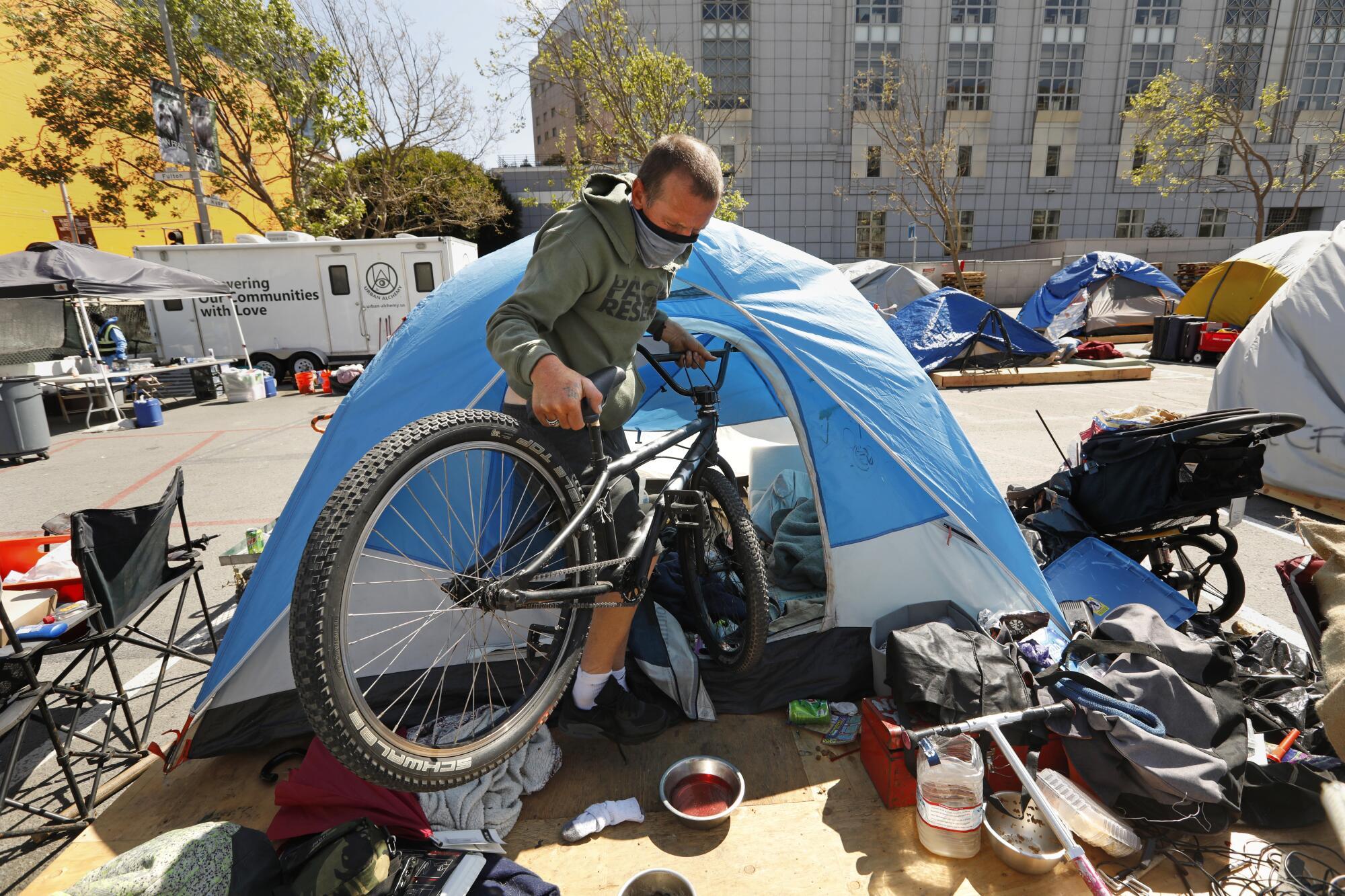
“All that craziness out there doesn’t come in here,” said Jody Morrow, 46, an unemployed plumber who arrived from Arkansas three years ago and has been mostly homeless since.
Before moving into the Fulton Street site last summer, he lived in a tent under the freeway and was told he couldn’t stay there by city workers who needed to clean the area. They offered him a place in the encampment, and he said his situation has improved slightly. He’s less worried about losing his possessions and said he has begun to think about getting a job delivering food on his bike.
He said the camp is far preferable to the larger shelters that his friends have stayed in. “Those seemed like jail when I listened to other people talk about them,” Morrow said.
But it’s how both Morrow and Johnson arrived at their respective sanctioned encampments that worries activists like Chris Herring, who say it’s a problem that the city is tying placements to the forced moving of people. Herring argued that this dynamic prioritized the interests of homeowners and businesses over people living on the streets with few options.
At the same time, Herring and several other homelessness activists say tent encampments connected to services can be a lifeline for unsheltered people. Last summer, the San Francisco Coalition for the Homeless surveyed unhoused people and found that more than half “would prefer a legal camp with amenities as opposed to existing shelters.”
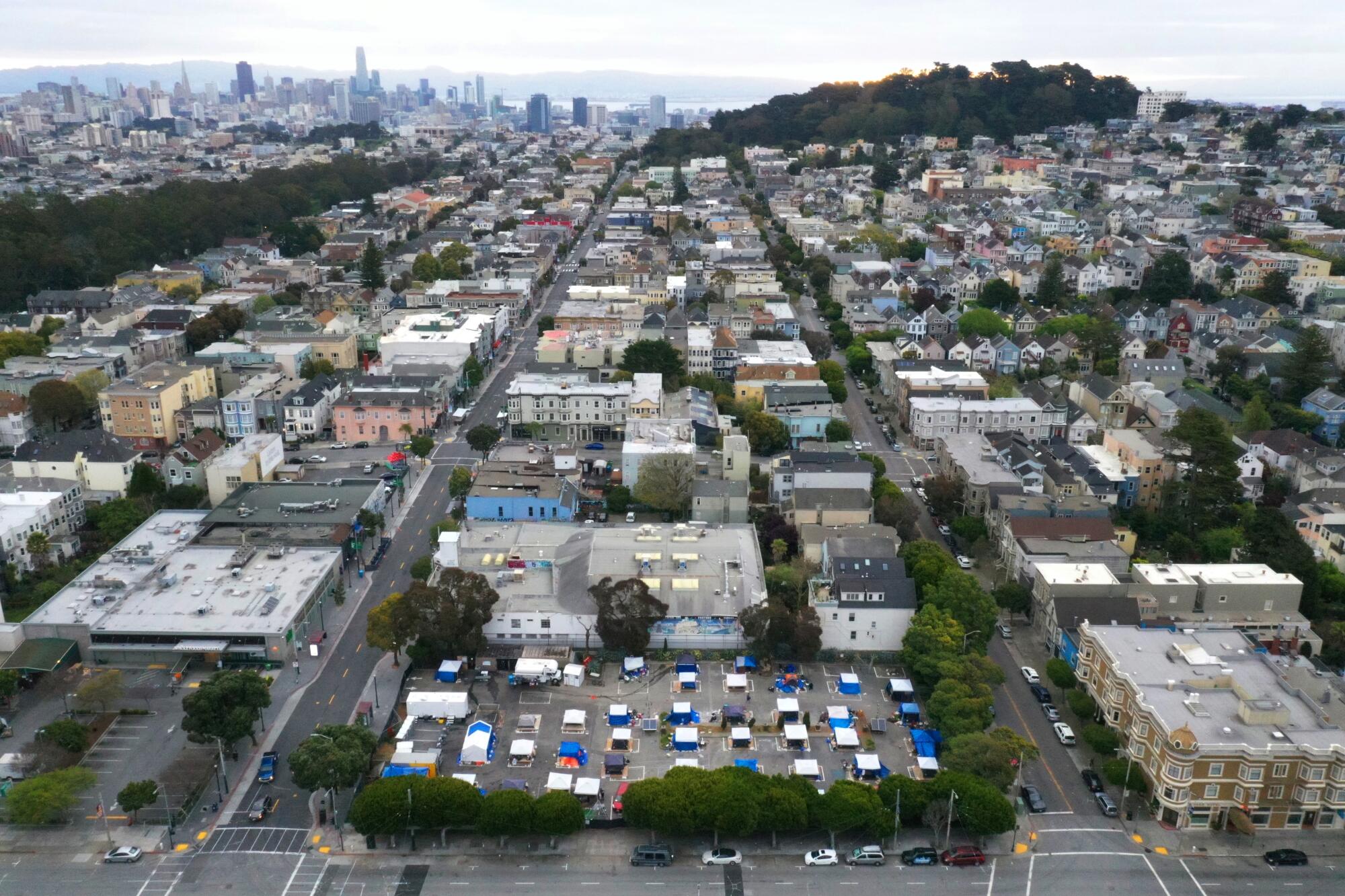
Herring argued that the camps are far too expensive and the money could potentially be put to better use either buying hotels or renting people rooms. The San Francisco Chronicle reported last year that the city was paying about $61,000 per tent per year — roughly $5,100 a month, or more than twice the rent of a typical one-bedroom apartment.
“I would definitely not consider [the encampments] an unqualified success. I wouldn’t consider them a failure, either,” said Herring, who has closely studied the problems inside San Francisco’s shelter system.
He pointed to one in the Haight-Ashbury neighborhood that he and other activists considered a model. It’s run by the Homeless Youth Alliance and its 40 or so spots are filled by unhoused people who had previously been living on the streets nearby.
That was a key difference for Mary Howe, the organization’s executive director, who has been working in homeless services in the area for two decades. Unlike at the other locations in the city, which receive new campers from all over the city, Howe’s goal has been to help the homeless people in the immediate neighborhood.
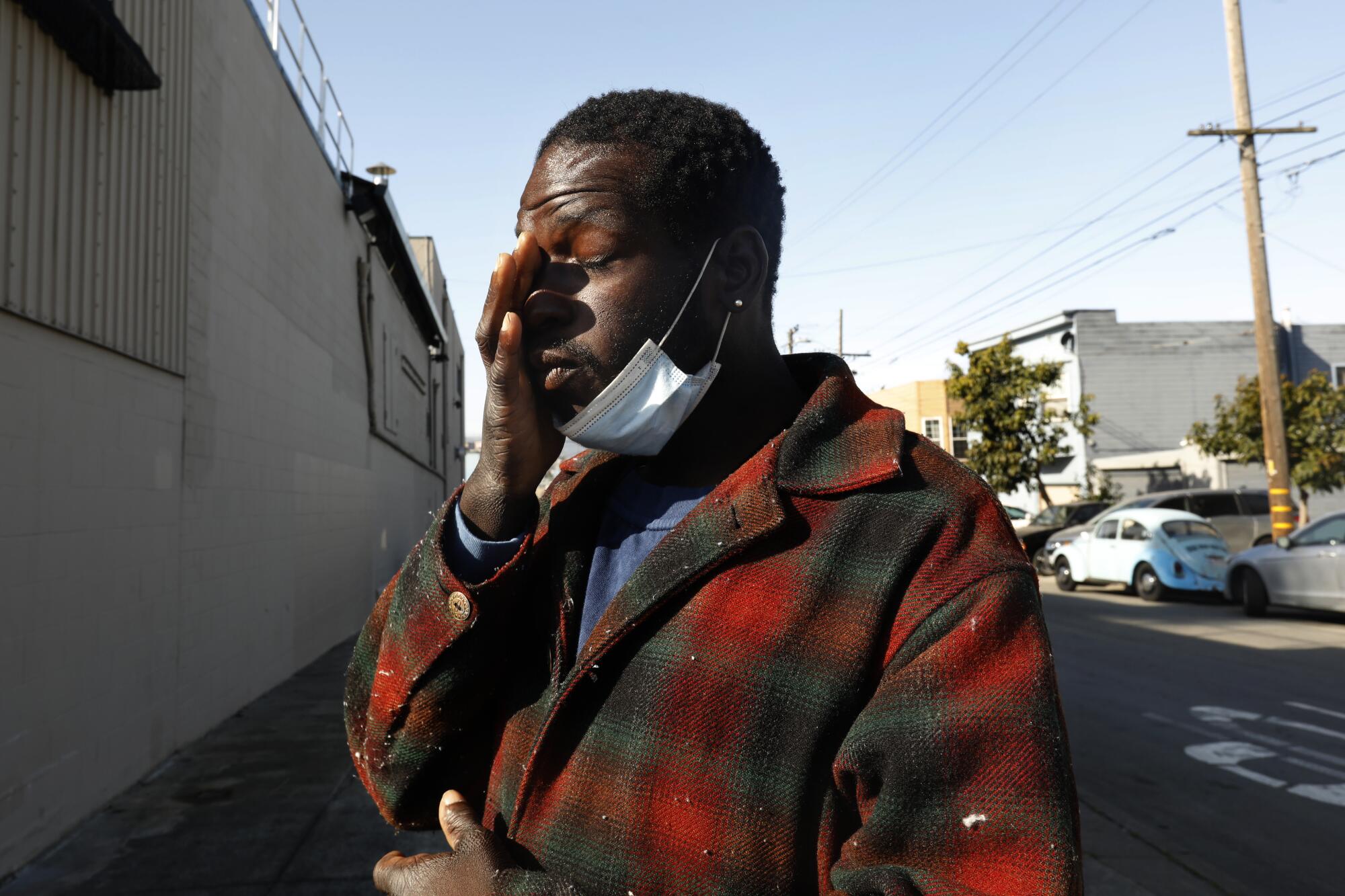
In the early days of the pandemic, Howe and her team witnessed a mushrooming of tents mostly along Haight Street. Initially they planned to build a campsite in Golden Gate Park — with or without government approval — but eventually were able to take over an empty, city-owned lot that used to be a McDonald’s. It soon will have supportive housing for homeless people constructed on it.
We “designed this place and created it with the voice of the people who are using the services in mind,” Howe said.
Howe described how residents sign accountability agreements, but fewer than 10 people have been removed for bad behavior. People feel like they’re part of a community, she said, and appear to be invested in keeping it clean and pleasant. They can come and go as they please and have access to private meeting rooms where they can get medical and psychological support.
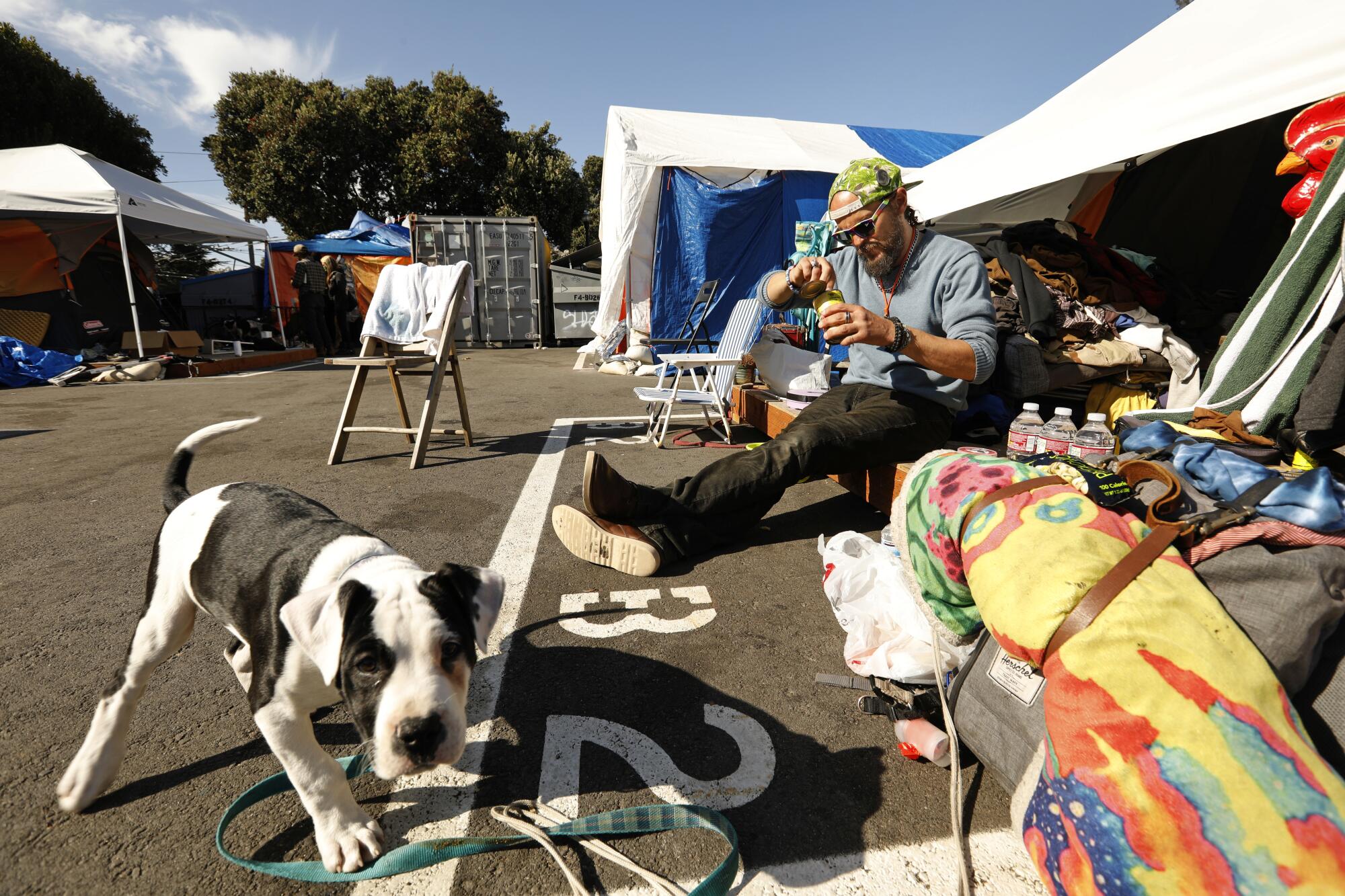
Adam Schmidt, who has been homeless for eight years, said the encampment community gave him a bit more peace of mind. It meant that he didn’t need to worry as much about losing possessions and finding food for himself and his dogs, Moose and Button. They had been living at a large encampment several blocks away, and when an opportunity came to move to a place with food, showers and bathrooms, they jumped.
“It’s stressful to carry everything you have and fear losing a backpack with everything you have in it,” he said. “This gave me a place where I had a little more security.”
Howe said part of the success was in keeping the camp small. Only about 30 people live there. Kositsky, the city worker, applauded the work of Howe and her team but said encampments need to be larger to be economical. He also said that buying rather than renting things like toilets and hand-washing stations along with not having private security would make the sites cheaper to run.
Howe is a bit worried about a looming deadline. Mid-June is when construction begins on the housing development.
Before that can happen, the sanctioned campsite will have to close. Howe is still figuring out where people like Schmidt will go.
More to Read
Sign up for Essential California
The most important California stories and recommendations in your inbox every morning.
You may occasionally receive promotional content from the Los Angeles Times.
